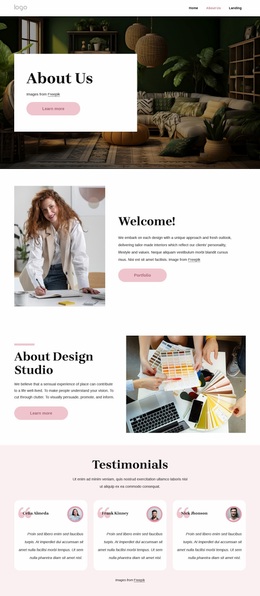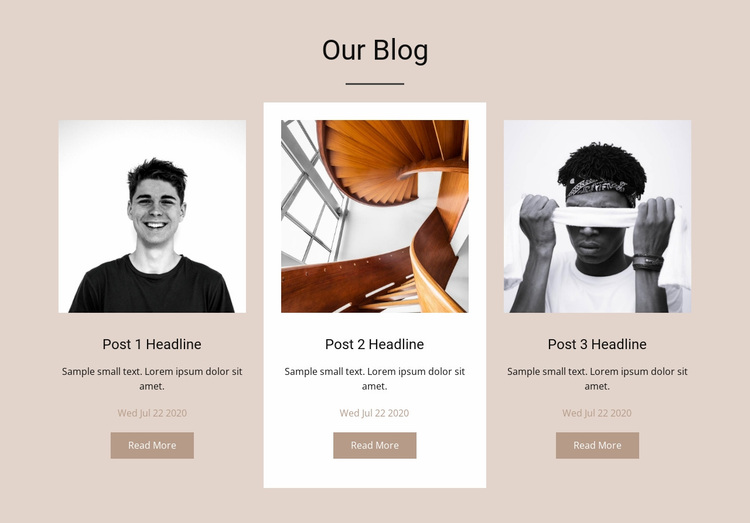The Ultimate Overview to Modern Web Site Style Trends
In the ever-evolving electronic landscape, modern site design trends play a vital function in forming customer experience and involvement. From the surge of minimal design concepts that prioritize simplicity to the impact of vibrant typography in specifying brand identification, each aspect adds to a cohesive online presence.
Minimalist Layout Concepts
Minimal style concepts emphasize the idea that much less is much more, promoting for simplicity and capability in visual communication. This strategy remove unnecessary elements, focusing rather on crucial components that convey the intended message efficiently. By focusing on clarity, minimalist style enhances individual experience, enabling visitors to browse web sites easily.
Core tenets of minimalist style include making use of sufficient white space, which develops a sense of balance and organization. This adverse space not only routes the audience's focus to key aspects however also fosters a soothing visual ambience. Additionally, a minimal shade palette is often utilized, using soft colors or single systems to keep aesthetic cohesion and avoid frustrating the customer.
Typography plays a crucial role in minimalist style, where clear typefaces are selected for their simplicity and efficiency in interacting material. Eventually, minimalist design concepts cultivate a focused setting that motivates users to involve with the web content, enhancing the general efficiency of modern site design.
Strong Typography Options
Embracing vibrant typography options has come to be a defining characteristic of contemporary site style, as it successfully catches interest and communicates strong messaging. Developers are increasingly utilizing typography not just as a practical component yet as a vital visual component that boosts the general visual and user experience.

Additionally, the juxtaposition of strong typography with minimalist layout principles permits striking contrasts, enhancing readability while maintaining visual allure. Using whitespace around vibrant text even more highlights its relevance, guaranteeing that the message resonates with the target market.
As digital landscapes become extra affordable, leveraging strong typography makes it possible for brands to separate themselves and leave a long-term perception. The cautious choice of typefaces and their application can stimulate feelings, establish tone, and drive action, making strong typography an indispensable tool in modern site design. Inevitably, it is an effective way to boost storytelling and guarantee that crucial messages are not only seen but also felt.
Receptive and Mobile-first Layout
Mobile-first and receptive style has emerged as a crucial principle in modern site development, mirroring the raising reliance on mobile tools for accessing online content. As user behavior shifts towards mobile surfing, designers must focus on producing experiences that adjust seamlessly across different display dimensions and resolutions.
A receptive layout guarantees that an internet site automatically readjusts its layout, images, and functionality based upon the gadget being utilized. This approach boosts customer experience by providing constant article navigating and readability, regardless of whether the site visitor gets on a tablet computer, desktop, or mobile phone computer. Mobile-first design advocates for developing web sites originally for smaller displays, ultimately scaling up to larger screens. This technique urges a more efficient and structured design process, focusing on important material and performance first.
Executing mobile-first and receptive concepts not just accommodates individual preferences yet likewise aligns with seo (SEARCH ENGINE OPTIMIZATION) techniques. Significant online search engine, like Google, focus on mobile-friendly websites in their positions, making it important for companies to embrace these style approaches. In a competitive digital landscape, welcoming mobile-first and responsive design is not just a choice; it is necessary for making sure ease of access and interaction with a varied target market.
Engaging Microinteractions
Microinteractions play an essential duty in boosting individual interaction and general website experience, especially in the context of receptive and mobile-first layout. These refined design aspects provide instant feedback to individuals, making interactions much more user-friendly and delightful. Instances consist of additional resources button computer animations, alert notifies, and packing indicators, which not only guide customers yet likewise develop a feeling of connection with the interface.
Incorporating engaging microinteractions can dramatically boost use by lowering cognitive load. When users get auditory or aesthetic comments upon performing activities, such as clicking a button or sending a type, they really feel more positive in their options. This cultivates a smoother navigating experience, eventually raising user retention.

As internet site design patterns proceed to develop, the significance of microinteractions can not be overemphasized. They work as the subtle yet powerful touchpoints that transform ordinary interactions into phenomenal experiences, thus raising the total effectiveness of modern-day website design.
Lasting Website Design Practices
Sustainable website design techniques are ending up being progressively vital as the electronic landscape expands and environmental concerns rise. Designers and developers are acknowledging their obligation to produce web sites that not just serve user demands but likewise reduce ecological impact. This approach includes a number of essential methods.
To start with, enhancing energy consumption is paramount. Sites should be created to load quickly and efficiently, which decreases server power use and improves customer experience. Strategies such as picture compression, decreasing HTTP requests, and using modern coding techniques contribute dramatically to this objective.
Secondly, picking eco-friendly holding suppliers is important - website design. Numerous hosting business are currently powered by sustainable energy sources, making it possible for web sites to run in an extra lasting fashion. This choice mirrors a commitment to reducing carbon footprints
In addition, taking on a minimalist style can enhance sustainability. Fewer components on a page bring about less data transfer, which not just quickens packing times however also conserves resources.
Finally, promoting electronic ease of access makes sure that websites get to a wider target market without unnecessary bloat, straightening user experience with environmental responsibility. By integrating these sustainable practices, internet developers can contribute positively to both customer right here engagement and the earth's well-being.
Final Thought
In recap, modern site design patterns highlight the assimilation of minimal concepts, strong typography, and responsive layout to enhance user experience. Adopting these trends is necessary for developing impactful electronic experiences that reverberate with individuals in a significantly affordable on-line landscape.
In the ever-evolving digital landscape, modern internet site style patterns play an important role in forming customer experience and interaction. By focusing on clearness, minimalist style enhances customer experience, permitting visitors to browse sites easily.
Ultimately, minimal design concepts cultivate a concentrated atmosphere that urges customers to engage with the web content, boosting the overall efficiency of modern internet site layout.Microinteractions play an essential role in improving individual engagement and general site experience, particularly in the context of receptive and mobile-first layout.In recap, contemporary web site design fads emphasize the combination of minimal principles, vibrant typography, and responsive layout to boost user experience.